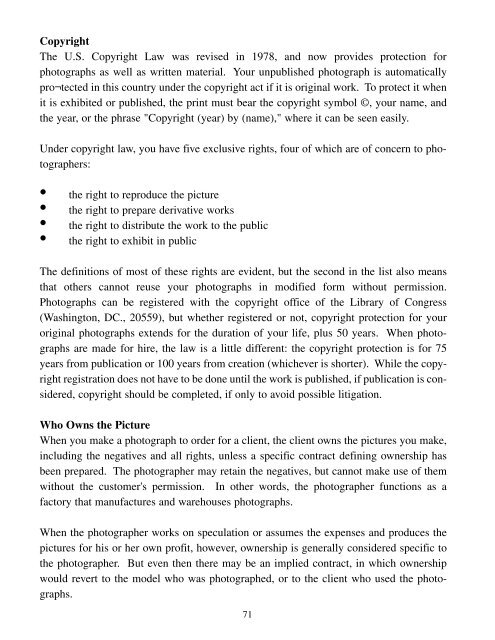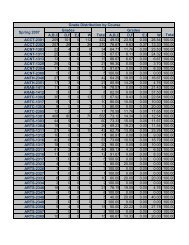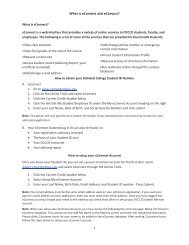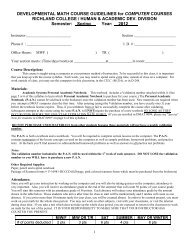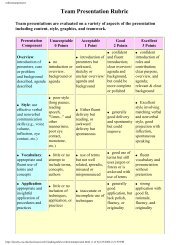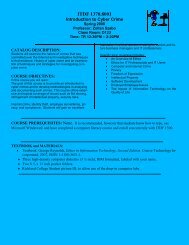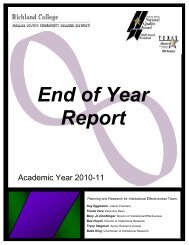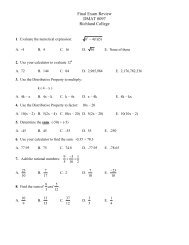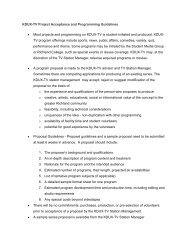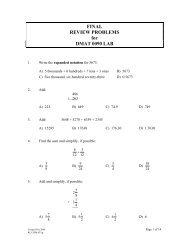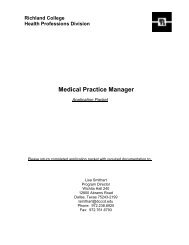Photo Lab Manual (PDF) - Richland College
Photo Lab Manual (PDF) - Richland College
Photo Lab Manual (PDF) - Richland College
Create successful ePaper yourself
Turn your PDF publications into a flip-book with our unique Google optimized e-Paper software.
CopyrightThe U.S. Copyright Law was revised in 1978, and now provides protection forphotographs as well as written material. Your unpublished photograph is automaticallypro¬tected in this country under the copyright act if it is original work. To protect it whenit is exhibited or published, the print must bear the copyright symbol ©, your name, andthe year, or the phrase "Copyright (year) by (name)," where it can be seen easily.Under copyright law, you have five exclusive rights, four of which are of concern to photographers:• the right to reproduce the picture• the right to prepare derivative works• the right to distribute the work to the public• the right to exhibit in publicThe definitions of most of these rights are evident, but the second in the list also meansthat others cannot reuse your photographs in modified form without permission.<strong>Photo</strong>graphs can be registered with the copyright office of the Library of Congress(Washington, DC., 20559), but whether registered or not, copyright protection for youroriginal photographs extends for the duration of your life, plus 50 years. When photographsare made for hire, the law is a little different: the copyright protection is for 75years from publication or 100 years from creation (whichever is shorter). While the copyrightregistration does not have to be done until the work is published, if publication is considered,copyright should be completed, if only to avoid possible litigation.Who Owns the PictureWhen you make a photograph to order for a client, the client owns the pictures you make,including the negatives and all rights, unless a specific contract defining ownership hasbeen prepared. The photographer may retain the negatives, but cannot make use of themwithout the customer's permission. In other words, the photographer functions as afactory that manufactures and warehouses photographs.When the photographer works on speculation or assumes the expenses and produces thepictures for his or her own profit, however, ownership is generally considered specific tothe photographer. But even then there may be an implied contract, in which ownershipwould revert to the model who was photographed, or to the client who used the photographs.71


